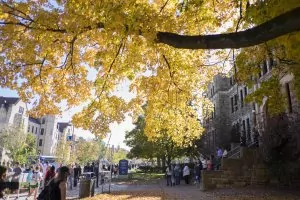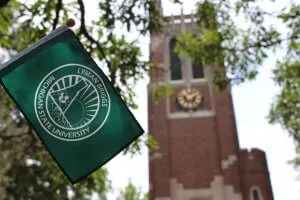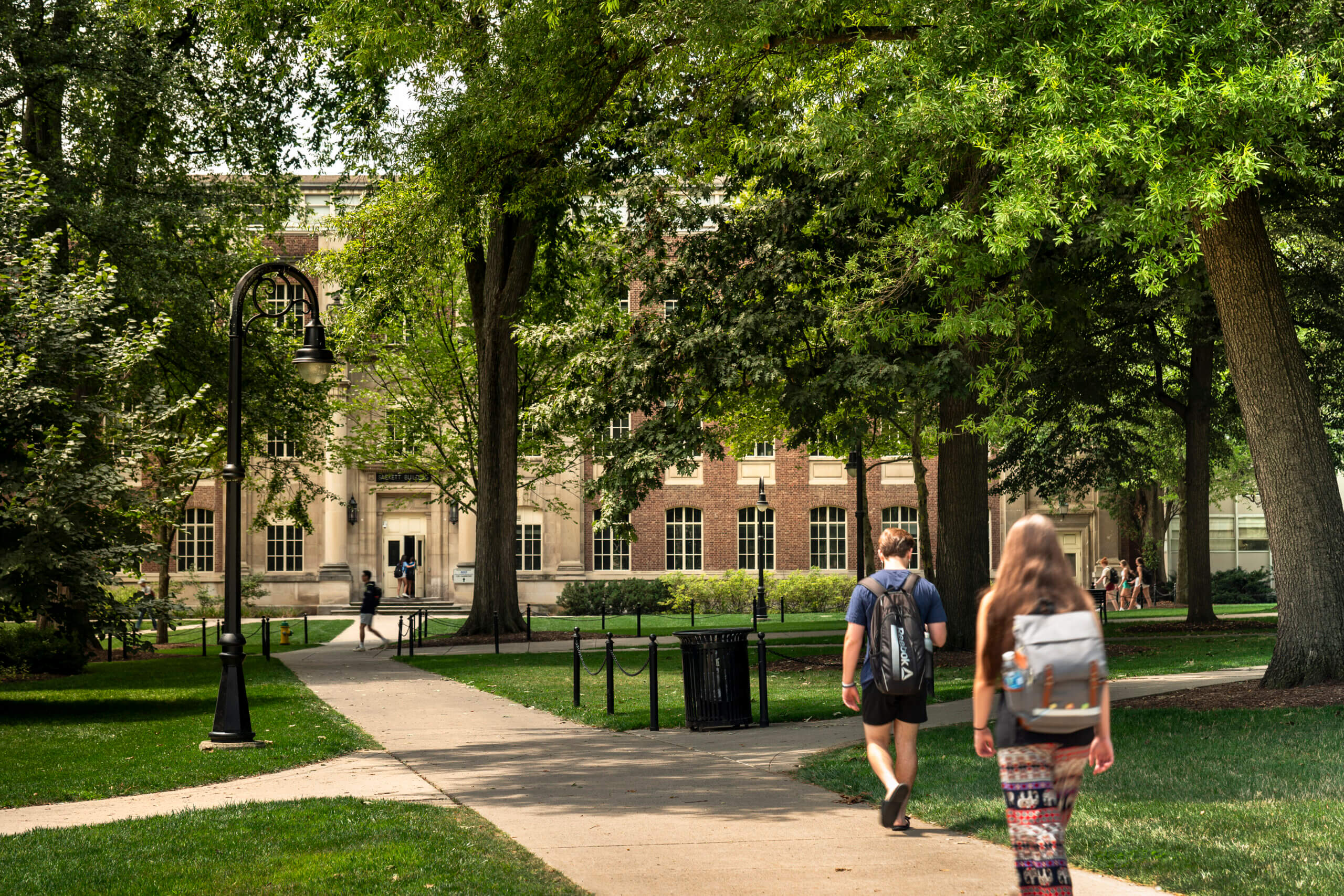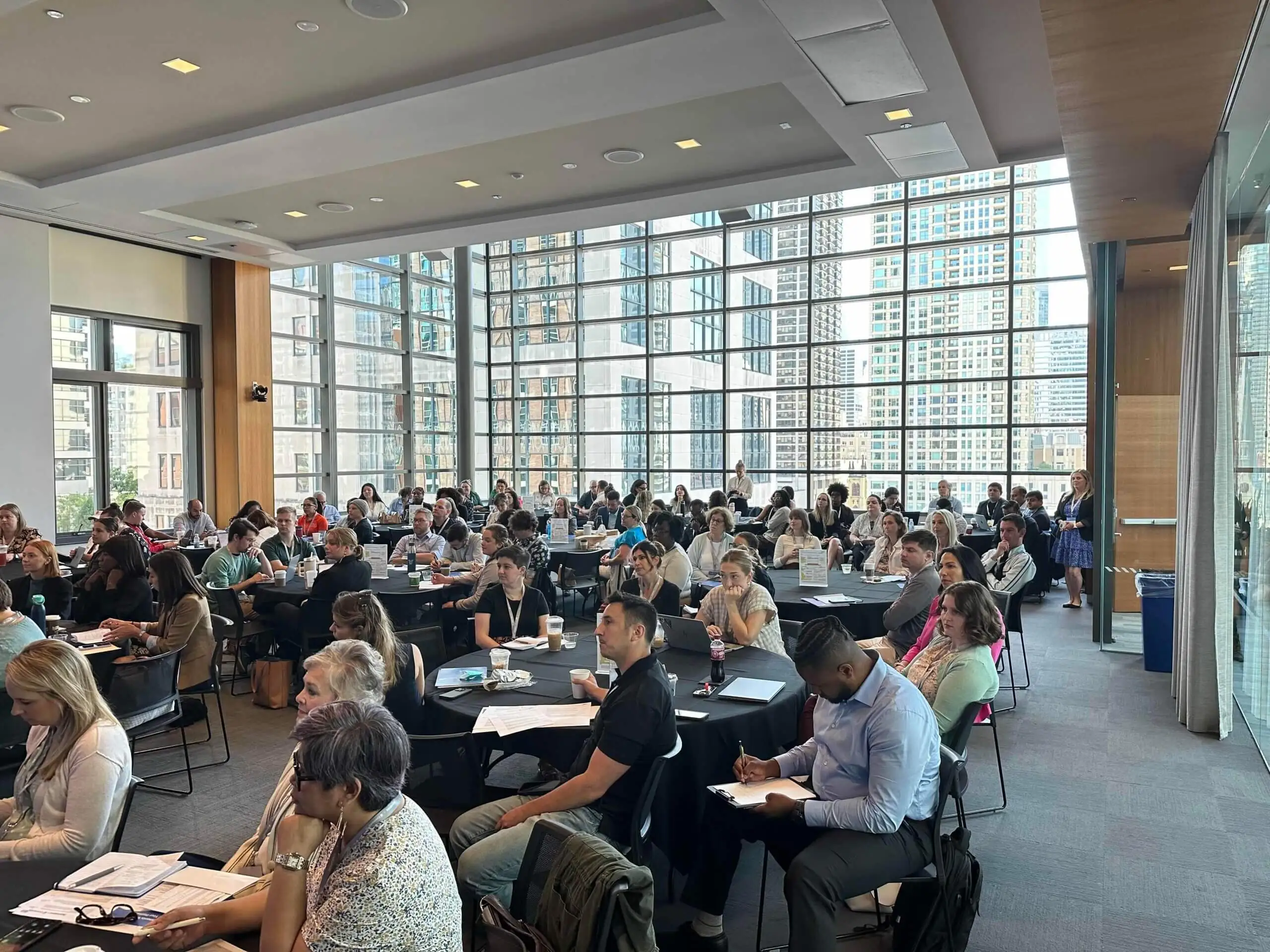Career Services
Survey Reveals 3 Under-supported Ways Colleges Can Help Graduates Achieve their Career Goals
Inside Higher Ed and College Pulse survey highlights deficiencies and areas students are seeking improvement. This piece was authored […]
Solutions
Helping higher education create transformational change across campus.
See AllFor Universities
Admissions & Enrollment
Maximize enrollment by increasing yield & reducing melt
Experiential Learning
Scale High-Impact Practices for student success
PathwayU
Redefine how students pick majors & careers with PathwayU
Student Success
Increase retention & persistence to graduation
Career Services
Improve career readiness & career navigation
Industry Partners
Connect universities & corporations for project-based learning
Alumni & Advancement
Grow alumni engagement & the philanthropy pipeline
Success Stories
Read how schools leverage PeopleGrove in their communities.
See All Stories
University of Kansas
How University of Kansas scales career services to their 375,000 alumni

Michigan State University
How Michigan State ensures academic and career success for students

University of Miami
How the Toppel Career Center joined forces with alumni to provide career guidance to students
Resources
Explore blogs, webinars, whitepapers, and more resources to enhance how students and alumni connect.
See All ResourcesBlog
Read posts about how PeopleGrove meets higher education’s ever-changing needs at every turn.
Events
In-person or online, join PeopleGrove for unmatched experiences, conferences, webinars, and more.
Research Library
A collection of stories, events, research, and best practices to transform learners’ experiences.
Super Mentors Book
The ordinary person’s guide to asking extraordinary people for help.
Innovators Community
Learn from thought leaders and practitioners in both higher education and workforce development.
About
PeopleGrove is made for learners by learners. Everyone here makes it possible for students and alumni to succeed.
Learn MoreCareers
Be a part of the next big thing for learners everywhere and start making an impact. Join us today!
Contact
Want to get in touch? Have a question? We’d love to hear from you. Connect with us.
Career Services
Inside Higher Ed and College Pulse survey highlights deficiencies and areas students are seeking improvement. This piece was authored […]


Inside Higher Ed and College Pulse survey highlights deficiencies and areas students are seeking improvement.
This piece was authored by PeopleGrove’s Eric Leftwich.
According to students, the answer seems to be no. A recent survey conducted by Inside Higher Ed and College Pulse has highlighted perceived deficiencies and areas that students feel need of improvement. This survey gathered responses from 1,250 students attending two- and four-year institutions across 58 campuses. Released in late December, the survey supplements insights from a broader Student Voice survey focusing on life after college. These surveys reveal students feel significant gaps exist when helping them with career identification, mapping educational pathways to achieve their goals, and providing the necessary resources and mechanisms to connect them to their desired outcomes (a career). I believe this is one of the reasons why so many students are questioning the value of a college education.
Simply put, they desire practical modern career guidance tools, peer motivation, mentorship, and meaningful connections that will help launch into a fruitful life after learning. The survey indicates that nearly 4 in 10 students attribute parental encouragement as their primary influence in choosing a field of study. However, students also express a strong desire for involvement from faculty, academic advisers, and alumni all as well as their career center all working in unison, when helping them with career planning and preparation. They want resources that put the career discussion front and center at every stage in their education journey.
Modern career guidance encompasses more than just the traditional advice passed down from parents or relying solely on outdated career assessments. In today's dynamic world, learners are seeking careers that align with their passions and offer fulfillment beyond just financial rewards. An article from Inside Higher Ed underscores the importance of finding a career and job that individuals truly love, often prioritizing this over high pay. As a co-creator of the PathwayU product, I firmly believe in guiding students towards discovering a profound sense of purpose and meaning in their educational and career journeys. This isn't just about individual success; it's about nurturing a society where everyone can thrive, contributing to a robust economy, and fostering a culture of lifelong learning and giving back. To achieve this, modern career guidance tools must evolve beyond traditional assessments. They should include modules for self-discovery, incorporate predictive or AI-driven career matching, and facilitate connections through communication tools to help students build networks and communities that support their aspirations.
At the national level, there remains a huge disconnect between open positions and what graduates are looking for in a job. Thus, many well-paying jobs requiring a college degree remain unfilled and employers continue looking to local colleges and universities to fill the gap.
What is sometimes under-appreciated by schools is that many employers want to connect to students earlier in their educational paths. A senior might become an employee, a junior might become an intern, but a sophomore might become both of those as well a new customer and brand ambassador for the company and its products and services. Thus, employers are always on the lookout for meaningful ways to get in front of students in their first few years of school. I’m convinced that another reason is that many executives appreciate the opportunity to tell their story and have an impact on a young person’s life.
It’s clear that meeting the career goals of today's students requires broad and collaborative effort. By providing purpose-driven educational pathways and facilitating connections with advisors, mentors, and employers, colleges can enhance student outcomes and foster a culture of lifelong learning and giving back.
Browse more research and insights.

Alumni & Advancement
Harnessing Campus Partnerships and Data to Deepen Alumni Connections Georgia Tech, known for its robust alumni network of over 200,000 […]
3 min read

Company
Conference Review Innovators + CommunityLIVE 2024 On August 5th, 2024, higher education leaders, innovators, and thought leaders came together at […]
3 min read

Career Services
For nontraditional students pursuing higher education while balancing work, family, or both, support can be key to student success. University […]
4 min read